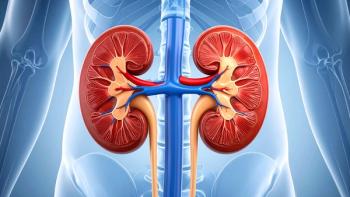
Liver Cancer Deaths Have Tripled in England
Both men and women have seen an increase in liver cancer diagnoses and death over the past nearly 20 years, according to new study findings.
Deaths from liver cancer have tripled in England over the past nearly 20 years, according to new research findings presented at the 2019 National Cancer Research Institute (NCRI) Cancer Conference.
Researchers used information from the National Cancer Registration and Analysis Service, which contains data on tumors, patients, diagnosis and treatment of cancer, to understand regional variations in hepatocellular carcinoma (HCC) — the most common form of liver cancer.
They found that between 1997 and 2016 more than 62,000 cases of primary liver cancer were diagnosed in England, of which 48% (29,906) were HCC, 38% intrahepatic cholangiocarcinoma (iCCA) and 14% were unspecified or other rare subtypes.
Most of the HCC cases were in men. However, there was increased incidence of HCC and deaths in both men and women over the 19-year time frame. In 1997, there were 2.73 cases of HCC diagnosed in men and 1.93 deaths per 100,000 of the population. By 2016 the number of diagnoses increased to 8.82 and deaths to 5.97. In women, 0.82 cases of HCC were diagnosed in 1997 with 0.51 deaths per 100,000 of the population. These numbers increased by 2016 with 2.2 diagnoses and 1.4 deaths.
Twenty-five percent of the HCC cases were from the most deprived fifth of the population, according to Dr. Anya Burton, a cancer epidemiologist at Public Health England. Of those cases, more than half (58%) had cirrhosis and, of these, 42% had decompensated cirrhosis — the most severe form when the liver has developed so much scarring that complications set in, she explained.
A troubling find was that most patients with HCC didn’t receive specific cancer therapy. “The most common routes to diagnosis were emergency presentation (35%) and GP referral (30%), and less than half of patients were alive a year after diagnosis,” the researchers said.
Liver cancer develops about three times more often in men than in women, according to the
“The presence of cirrhosis, particularly advanced cirrhosis, in many patients means treatment options are severely limited,” Burton said in a press release. “Our findings highlight the urgent need to address prevention strategies for both liver disease generally and hepatocellular carcinoma specifically.”
The researchers plan to explore this further by examining the risk factors in the HCC population.




